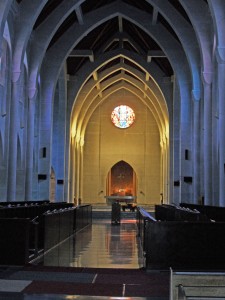Jesus issues an invitation to Nathanael, a.k.a. Bartholomew, “Come and SEE.” Entering into a relationship with Jesus is about seeing. Alla Anthony DeMello, Jesus is calling on us to awake, open our eyes, see what is real.
Last week was blessed for us. I had the opportunity and privilege of co-leading a Merton retreat at the Monastery of Our Lady of the Holy Spirit in Conyers, GA with Father James Behrens. This monastery is one of my favorite go-to places. Getting up for Vigils, chanting the Psalms with the monks, visiting with Father Anthony, Father Tom Francis and Brother Chaminade are always rich experiences. Just driving in down the magnolia lined drive lets you know you are on holy ground.
For me, the retreat turned out to be about “seeing.” Father James has a great sense of Merton finding the sacred in the ordinary. This was a new learning for me. As Merton studied Zen and developed his perception of seeing as a photographer, he could see the divine in the ordinary and this seeing needed no mediation via words or descriptions.
One of the retreatants introduced me to Walter Bruggemann’s Prophetic Imagination. Prophecy, a gift of the Holy Spirit, calls us to speak truth to power. Speaking truth to power involves criticizing and energizing. Both prophetic activities, in my opinion, rely on “seeing.”
Jeremiah, Isaiah, and Ezekiel saw. They criticized the excesses of royal power. They saw the end of the royal monarchy. They saw the loss and lamentation in exile. They saw that they, as exiles, were set apart, over against royal prerogatives leading to death and despair. They saw the tender mercy of God who would eventually restore the exiles to the Holy Land.
They saw the need to speak words of hope and encouragement. They saw that their past offered hope for the future, “Come to the water. Eat bread without price.” They saw that God blessed the barrenness of Sarah. They saw that God delivered Moses and the people from slavery and oppression under another royal king.
Zen, a form of Buddhism, which Merton was exploring in the last years of his life (Zen and the Birds of Appetite, Mystics and the Zen Masters), is about “seeing.” Merton saw the oneness of all. Merton saw oneness with God through the kenosis (self-emptying) of Jesus the Christ. Merton saw our oneness with one another—we are all children of the one Creator. Merton saw our oneness with creation which is groaning into ever-new life.
Merton “sees.” Merton criticizes a bureaucratic church and a consumerist society. Merton energizes us with hope beyond despair as he reminds us not to embrace the folly of instant results. The Holy Spirit is alive and well and is moving the Church forward. All will be well under the Spirit’s tutelage.
Richard Rohr, a popularizer of much of Merton’s thought, “sees.” He sees paradox and non-duality. He sees lamentation as the source of renewed hope.
The ability “to see” is more than gift. As James Finley, Merton scholar says, “spirituality is having a daily rendezvous with God.” We show up. God shows up. We “see” each other. We enter into union with the divine which is without mediation. What is meditation? What is contemplation? One pundit says that “God looks at me and I look at God.” “Seeing.”
Jesus is extending the invitation to us, “Come and see.” In Eucharist, He issues a similar invitation, “Taste and see.” We come and see, we taste and see the goodness of God—mercy, love, compassion, justice, and peace.

